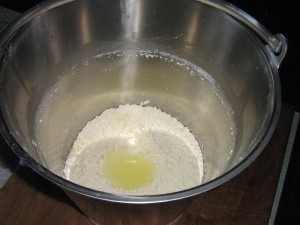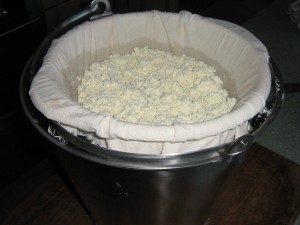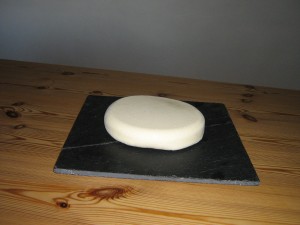For some time now I have wanted to make a home made cheese, and with fresh milk prices at the super market being so ridiculously cheap I decided now was the perfect time to have a go.
I have made paneer before, as a base for a curry, so I had some basic understanding of the principles but I wanted to make a pressed, hard cheese.
A search on the internet brought me to the Ansteys Cheese site, which had a page explaining the process for making a traditional farm house cheese. While not a recipe as such, I found the process instructions to be very informative and easy to follow.
Given I have always treated recipes as a guide and not a bible I was happy to improvise. Plus, I was not out to make a prize winning cheese or in fact a specific cheese, just a type of cheese that would have been made in many homes years ago, as a means of preserving excess milk.
I purchased 12 pints of milk for £3, yes £3 and I had previously purchased a small bottle of vegetarian rennet, so all I needed was something to turn the milk sour and acidic.
Most commercial cheese dairies use starter culture to ripen the milk. Starter culture is bacteria that breaks down lactose in the milk to form lactic acid, which is the essential prerequisite to making cheese. While using starter culture is a necessity for a commercial dairy, I had read that it is possible to taste the starter in the finished cheese, plus, I did not have access to purchasing a starter culture and traditionally it would not have been used in the home.
For many years now I have had a sour dough starter on the go, which is a natural bacteria and I thought this might work like a starter culture, to sour the milk by converting the lactose into lactic acid.
So, I began by filling a stainless steel bucket with the milk, covered it with a tea towel and placed it onto the top of the AGA and left it over-night, having first adding one teaspoon of natural yoghurt and a desert spoon of the water from my sour dough starter.
In the morning the milk was around 31°C and had a sour taste: the first stage was a success.
To the warm and soured milk I added 2 tsp of rennet and left it for 45 minutes.
The milk had now coagulated as hoped, so I cut this up with a knife, which created curds and whey. I placed the bucket on to the warming plate of the AGA and gently stirred the curds through the whey from time to time, until the mix reached 40°C at which point I removed from the heat.
Now, had I been looking to make a specific cheese I would at this point have needed to test the acidity of the whey. Given I wasn’t and that I don’t have the means of testing the acidity of the whey, I played it by ear using intuition. This is fine, so long as the cheese turns out OK but it also means I will not be able to make the same cheese twice, though this is part of the pleasure. Well is is for those of us who don’t bother about following a recipe to the letter!
After a 20 minute wait I drained off the whey and then cut up the curd in the bottom of the bucket and left for a further 15 minutes. At this point I added salt and stirred this in thoroughly. The salt stops the acidity rising any further and I just added salt until the salty curd tasted pleasant.
The salted curd was then drained again and broken up into smaller pieces ready to be placed into a muslin cloth over a sieve. I then folded the cloth to encase the curds and squeezed out any excess whey.
The muslin bag of curd was placed into a large cake tin inside a bowl and I made an improvised press out of packs of beer and cider.
Every so often I came and emptied the excess whey that had been pressed out of the cheese, and this process continued for two days.
After two days I took the pressed cheese out of the press and out of the muslin. The finished cheese weighed in at a touch over 800g which I calculated was a yield of nearly 12%. So, nearly a kilo of cheese for £3 of milk and 30p of rennet.
The pressed cheese was then soaked in hot water for around 30 seconds per side to seal the fat in the rind and then covered in calico. It is now in our pantry and I wait to see what happens. It should start to grow a mould and form a rind.
I will up date with tasting notes when I get to cut into the cheese.




